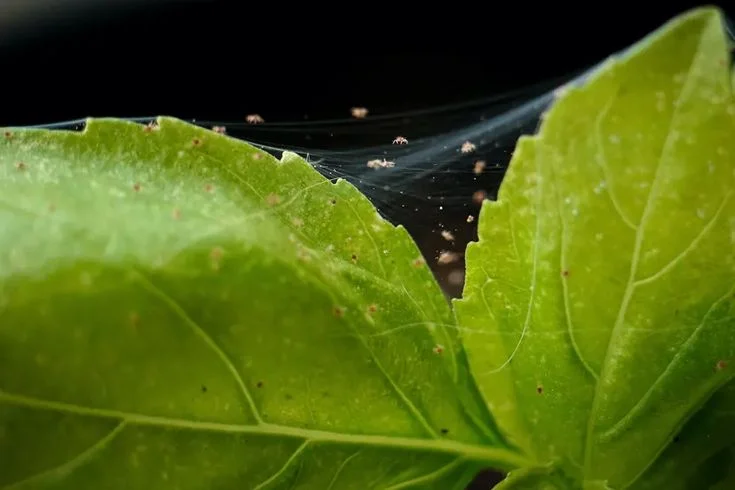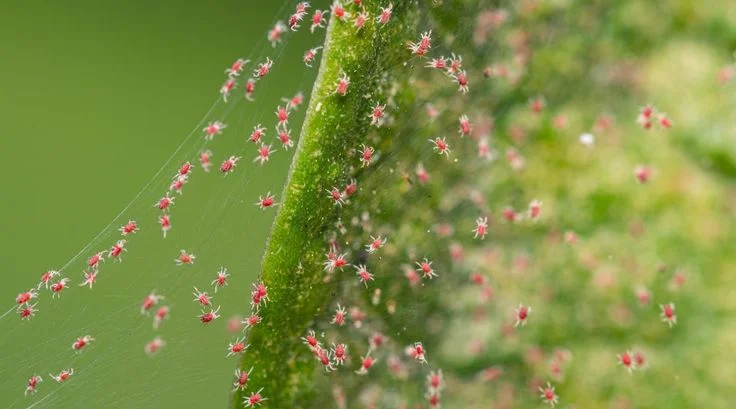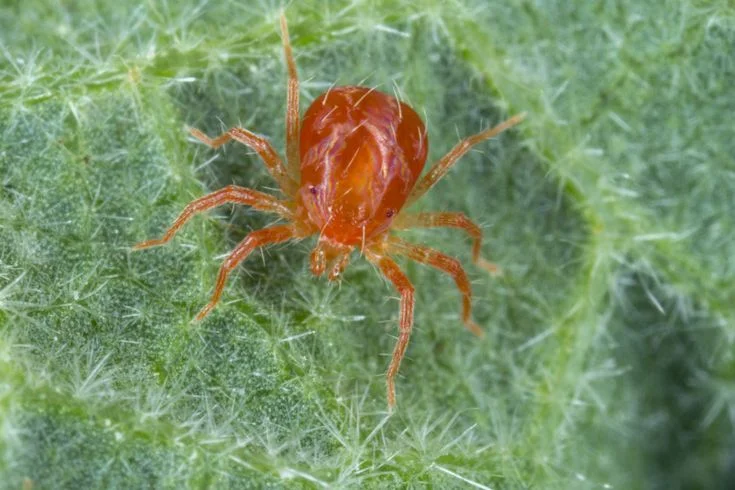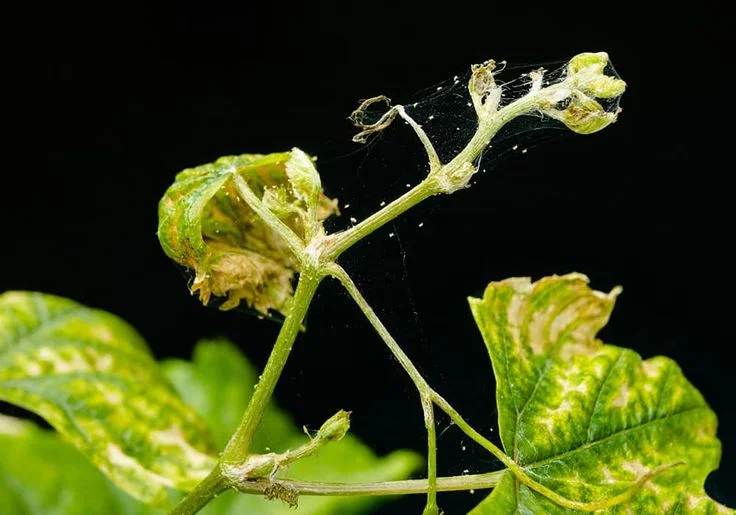Signs of Spider Mites are among the most destructive pests for houseplants, gardens, and even crops. They may be small, but the damage they cause is often significant if left untreated.
In this guide, we will discuss the signs of spider mites, how to identify them early, and what steps you can take to protect your plants. By recognizing their presence quickly, you can stop infestations before they spread and save your greenery from irreversible damage.
What Are Spider Mites?

Spider mites are tiny arachnids that belong to the same family as spiders and ticks. Measuring less than 1 mm in size, they are difficult to spot with the naked eye. However, their activity is very noticeable because of the damage they cause.
These pests thrive in hot, dry conditions and reproduce rapidly, making them hard to control once they take hold. Because of their small size and quick reproduction cycle, it’s essential to know the early signs of spider mites to prevent serious plant loss.
Why It’s Important to Spot the Signs Early
Early detection is crucial. If you miss the warning signs, spider mites can spread to nearby plants and weaken entire collections in no time.
Furthermore, they suck nutrients from plant cells, leaving plants vulnerable to disease, wilting, and eventual death. By learning the main signs of spider mites, you can take action before your plants suffer permanent damage.
Key Signs of Spider Mites
Below are the most common symptoms you will notice when spider mites are present:1. Fine Webbing on Plants
One of the most visible signs of spider mites is the silky webbing they leave behind. This thin web often appears on the undersides of leaves, stems, and even flowers.
At first, the webbing looks like a faint dusting, but as the infestation grows, it becomes thick enough to cover large sections of the plant.
2. Yellow or Speckled Leaves
As spider mites feed on plant cells, they pierce the surface and extract sap. This leaves behind small, discolored spots that look like tiny yellow or white specks.
Over time, the leaves may turn completely yellow, dry out, and eventually drop off. This gradual change is one of the clearest indicators that spider mites are feeding on your plants.
3. Stunted Growth and Weak Plants
Because spider mites suck essential nutrients from plants, growth slows dramatically. Leaves may look smaller, flowers may fail to bloom, and the plant often appears stressed even when watered correctly.
If you notice that your once-thriving plant is suddenly weak and pale, it is time to check for spider mites.
4. Visible Tiny Moving Dots
Although spider mites are microscopic, you can sometimes spot them if you look closely with a magnifying glass. They appear as tiny red, brown, or green dots moving across leaves.
This direct observation confirms their presence and allows you to take immediate action.
5. Increased Leaf Drop
Another clear sign of spider mites is premature leaf drop. Because the pests weaken plant tissues, the leaves can no longer sustain themselves and fall off before their time.
If you see leaves littering the soil beneath your plant, combined with other symptoms, spider mites may be to blame.
How to Confirm Spider Mite Infestation

Sometimes plant damage can look similar to other problems, such as nutrient deficiencies or fungal infections. To confirm whether spider mites are the culprit, try this test:
-
Hold a sheet of white paper beneath an affected leaf.
-
Gently tap or shake the leaf.
-
Tiny specks will fall onto the paper. If they begin to crawl, those are spider mites.
This simple test removes the guesswork and ensures you target the right problem.
Preventing Spider Mites
Knowing the signs of spider mites is only part of the solution. Prevention is equally important to keep them from returning.
Keep Humidity Levels High
Spider mites thrive in dry air. Increasing humidity around your plants through misting, pebble trays, or humidifiers makes conditions less favorable for them. In fact, maintaining proper humidity is also one of the key ways to prevent issues like fiddle leaf fig leaves falling, since both pests and dry conditions can stress plants.
Quarantine New Plants
Before introducing new plants into your home or garden, keep them isolated for at least two weeks. This helps ensure they are not carrying spider mites.
Clean Plants Regularly
Wipe leaves with a damp cloth or rinse them under a gentle shower. This helps wash away mites before they establish a colony.
Use Natural Predators
Introducing beneficial insects such as ladybugs or predatory mites can naturally control spider mite populations without harsh chemicals.
For more on natural pest control strategies, you can explore resources like University of California Integrated Pest Management.
Treating Spider Mite Infestations

If you notice several signs of spider mites, immediate treatment is necessary.
-
Neem Oil: A natural pesticide that disrupts mite feeding and reproduction.
-
Insecticidal Soap: Safe for plants, this solution kills mites on contact.
-
Pruning: Remove and dispose of heavily infested leaves or stems.
-
Horticultural Oils: These suffocate mites and are effective when applied thoroughly.
Always repeat treatments every few days until mites are completely gone.
FAQs About Signs of Spider Mites
How fast do spider mites spread?
Spider mites reproduce very quickly, often doubling their population in less than a week. This is why spotting early signs of spider mites is critical.
Can spider mites kill plants?
Yes. While a small infestation may only cause cosmetic damage, large infestations can weaken and eventually kill plants by draining nutrients.
Do spider mites affect outdoor and indoor plants?
Absolutely. Spider mites can infest both houseplants and outdoor gardens, especially in hot and dry environments.
What plants are most vulnerable to spider mites?
Spider mites prefer stressed plants but are especially drawn to tomatoes, cucumbers, roses, and many indoor tropical varieties.
Conclusion
Recognizing the signs of spider mites is the first step toward protecting your plants. From fine webbing to yellow leaves and stunted growth, these tiny pests leave obvious clues behind.
If you’re specifically dealing with yellowing foliage, it’s also worth exploring other potential causes, such as overwatering or nutrient issues—learn more in this guide on why peace lily leaves turn yellow.
By spotting the symptoms early, confirming the infestation, and applying preventive measures, you can safeguard your indoor and outdoor plants from long-term harm.
Remember, consistent care, regular inspection, and quick treatment are the keys to winning the battle against spider mites.


















